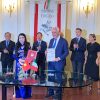New policies taking effect in July of 2016

- Import requirements for used machinery, equipment and production lines
According to Circular No. 23/2015/TT-BKHCN dated 13 November 2015, used machinery, equipment and production lines may be imported if they meet the following conditions:
They are imported into Vietnam within 10 years from the manufacture date;
They are manufactured based on standards which are in conformity with Vietnam’s National Technical Standards (QCVN) or Nation Standards (TCVN); or in conformity with standards of G7 countries on safety, energy saving and environment protection.
In respect of importation of used machinery, equipment and production lines for (new or extended) investment projects which are subject to investment intent approval and/or investment registration certificate (IRC), the above requirements are exempted if the list of used machinery, equipment and production lines has been approved in the investment license application dossier.
If necessary, the competent authority approving and/or granting IRC to investment projects may consult with any agency that is conversant with the technology of the used equipment before approving and/or granting IRC to investment projects.
Used replacement components and spare parts can only be imported if companies need to fix or replace the currently used ones. The companies may import itself or authorize another company to do so.
Noted: If necessary, other Ministries may have different requirement on the period of time from the manufacture date of the used machinery, equipment and production lines to the importation
The Circular takes effect on 1 July 2016.
- The rate of severance tax increased as from 01 July 2016
The new rate of severance tax is as follows:
– Metallic minerals:
Iron (from 12% up to14%), manganese (from 11% up to 14%), titan (from 11% up to 18%), gold (from 15% up to 17%), rare earths (from 15% up to 18%), platinum, silver, tin (from 10% up to 12%), wolfram, antimony (from 18% up to 20%), lead, zinc (from 10% up to 15%) …
– Non-metallic minerals:
Soil exploited for ground levelling and work construction (from 4% up to 7%), rock, gravel, rock used for lime baking and cement production (from 7% up to 10%), white marble (from 9% up to 15%), sand (from 11% up to 15%), sand used for glass-making (from 13% up to 15%), diamond (from 22% up to 27%)…
– Natural mineral water, natural thermal water and refined, bottled or canned natural water (from 8% up to 10%).
– Natural water used for hydropower generation (from 4% up to 5%).
– Groundwater used for clean water production (from 3% up to 5%).
– Groundwater used for other purpose (from 5% up to 8%).
The foregoing is specified on Resolution No. 1084/2015/UBTVQH13 dated 10 December 2015 and Circular No. 12/2016/TT-BTC dated 20 January 2016.
- New tax policies
As from 01 July 2016, the Law on amendments to some tax laws takes effect. Accordingly, the law provides a number of amendments to policies on value-added tax (VAT), special excise duty and tax administration.
The law regulates that the elderly/disabled people care services shall be exempted from VAT aiming for encouraging socialization and attracting more domestic, foreign investors in care services for the people living alone.
The law removes the provision on claiming refund for input VAT not yet fully credited after 12 consecutive months or 04 consecutive quarters. Instead, the outstanding input VAT shall be carried forward to be offset in next period for the purpose of ensuring conformity with the nature of VAT and reducing the procedure for the declaration and payment of VAT refund.
In addition, the law also reduces interest on late tax payment stated in Law on Tax Administration to 0.03% per day (instead of 0.05% per day) in order to remove difficulties of taxpayers and in accordance with the current bank interest rates decreasing by 8% -9% per year.
- Law on occupational hygiene and safety
Compared with Labor Code of 2012, the Law on Occupational Hygiene and Safety of 2015 introduces more comprehensive, particular regulations on occupational safety and hygiene. In addition to measures for assurance of occupational safety and hygiene under the Labor Code, the law specifies the implementation of occupational safety and hygiene at working place and compensation, allowance and insurance policies for employees suffering labor accidents or occupational diseases. Accordingly, an employee buying the insurance for labor accidents or occupational diseases shall receive benefit if the following requirements are satisfied:
– He/she has an accident in one of the following cases:
+ At the workplace and during the working time, even if he/she does necessary daily activities at the workplace or during the working time;
+ Outside the workplace or beyond working time when he/she does works assigned by their employer;
+ On the route between home and work within a reasonable period of time and route;
– He/she suffers a working capacity decrease of at least 5% caused by an accident as mentioned above.
Furthermore, the employer is obliged to make a payment for Insurance Fund every month. The premium rate is 1% of salary fund which is the basis for paying social insurance premiums for employees.
This Law comes into force from 01 July 2016.
Other news
- The delegation of Vinh Phuc province to promote investment, trade and tourism visited and worked with the Malaysian Investment Development Agency – MIDA
- Seminar of investment cooperation between Vinh Phuc and Tuscany, Italy
- Report of Japan Desk’s activities in the first 06 months of 2021
- Deputy President of the Provincial People’s Committee, Mr. Vu Chi Giang at the Weekly Business Meeting Program
- Ms. Hoang Thi Thuy Lan, Secretary of the Provincial Party Committee working with Toyota Motor Vietnam Co., Ltd and Honda Vietnam Co.,Ltd
